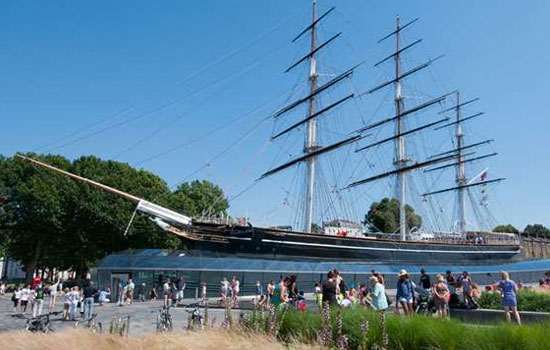STOTT PARK BOBBIN MILL, CUMBRIA
Stott Park is the last surviving example of Lancashire’s 19th-century textile industry, which had over 100 mills in its heyday. A bobbin is a spool that held thread or yarn, used in weaving and machine sewing, and such was the demand for them that Stott Park produced 250,000 a week.
The mill was built in 1835 and survived until 1971, having barely changed in more than 100 years, making it a fascinating time capsule of the Industrial Revolution. There were various additions over the years, including a steam engine in the 1880s and an electric motor in 1941. The mill survived by diversifying its output following the decline in demand for bobbins and by 1900 it was producing wire reels, tool handles and even duffle-coat toggles.
Plan your visitWATCH OUR VIDEO OF STOTT PARK BOBBIN MILL
Meet Mick Callaghan, the manager of Stott Park Bobbin Mill, as he takes us on a tour of the mill and its stunning surroundings, in a wooded valley on the west shore of Windermere. See the mill’s machinery in action, find out how a bobbin is actually made, and learn about some of the other items the mill produced in order to survive.
THE IRON BRIDGE, SHROPSHIRE
This icon of the Industrial Revolution recently underwent a £3.6m conservation project, during which the bridge was repainted in its original red-brown colour. Built over the River Severn in 1779, the bridge was the first in the world to be made of iron and pioneered the use of cast iron in the construction of buildings, aqueducts and bridges.
The bridge was designed by Shrewsbury architect Thomas Farnolls Pritchard with construction overseen by Abraham Darby III, the grandson of the man who pioneered a method of iron smelting that enabled the mass production of cast iron. The bridge used 378 tons of iron and was built using joining techniques that were usually used in carpentry.
plan your visitTAKE A BIRD’S-EYE TOUR OF THE IRON BRIDGE
See The Iron Bridge in Shropshire in all its glory with this incredible high-definition drone footage of the iconic structure. Get a sense of the intricacy of the design and enjoy fantastic views of the valley in which the cast-iron bridge was built. The video was made before the bridge was repaired as part of a major conservation project – since it reopened in January 2019, it has been restored to its original red-brown colour.
DERWENTCOTE STEEL FURNACE, TYNE AND WEAR
Constructed around 1733, this is the earliest steel-making furnace in Britain and was in use until 1875. It converted wrought iron to steel, a process known as cementation. When the fire was lit, heat travelled up through the flues to two sandstone chests, in which iron bars were packed with layers of charcoal powder. The carbon from the charcoal then diffused into the iron. The process took three weeks to complete and each cycle produced around 10 tons of steel.
The region was a hub for the steel industry in Britain in the early 1700s thanks to ready supplies of charcoal, coal, clay and sandstone. It also provided access to the North Sea, allowing for the import of Swedish iron.
plan your visit
BERNEY ARMS WINDMILL, NORFOLK
This large marsh mill was built in 1865 by millwrights Stolworthy of Great Yarmouth. It was named after the Berney family and replaced an earlier tower mill that stood on the same site. It was initially used to grind clinker, a mixture of chalk and clay used in the making of cement, until 1880. Three years later it was converted to pump water to drain surrounding marshland and was in use until the 1940s.
The mill has steep ladder-like stairs between each of its seven floors and, at 71ft high, it is the tallest drainage mill in Norfolk. Its distinctive black shell is due to the coating of tar on the exterior.
plan your visitJW EVANS SILVER FACTORY, BIRMINGHAM
Birmingham’s Jewellery Quarter is the UK’s centre for jewellery and today still houses over 800 business in the north-west of the city centre. At the heart of the area is JW Evans Silver Factory, discreetly located inside adjoining terraced houses. The family business was founded in 1881 and a tour of the factory provides a beguiling glimpse of how the workshops looked when they were still in use.
The factory, which closed in 2008, specialised in die-sinking and drop-stamping. As part of a guided tour, you can still see the tools and equipment that were used, along with an incredible 15,000 dies that are packed into the premises.
plan your visit



